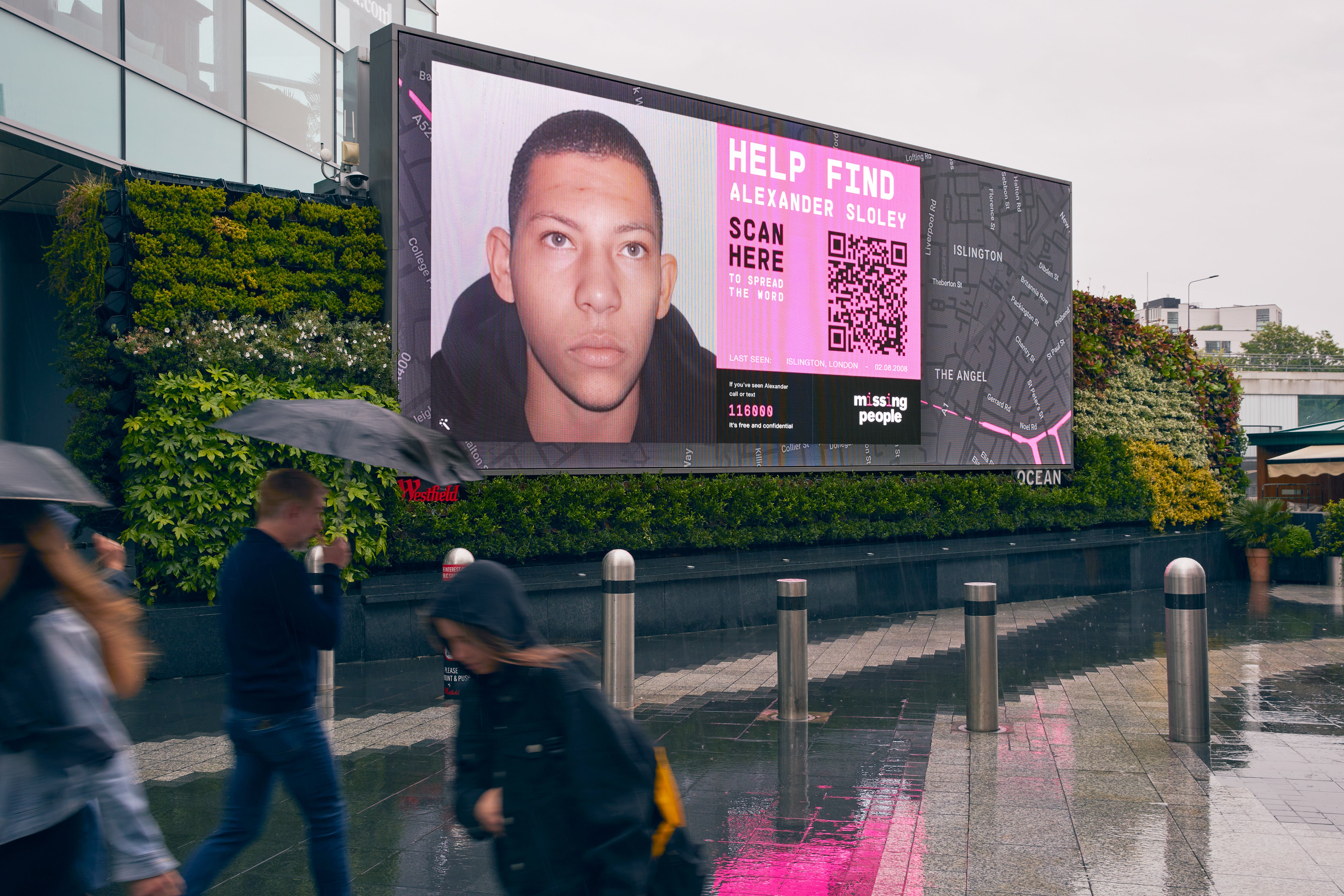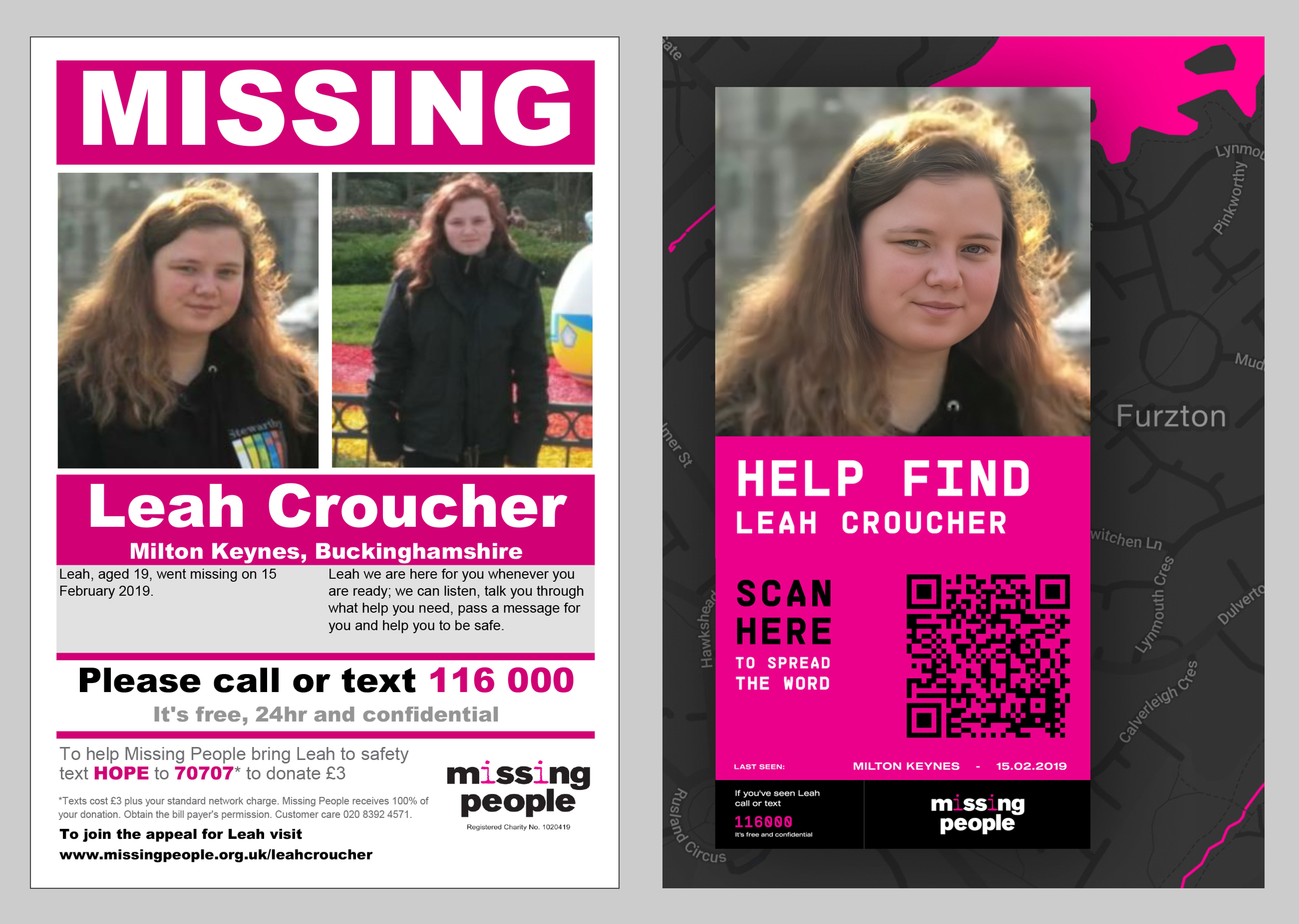New missing people posters will be 3D - but no longer include the word ‘missing’
After a decade of the old format, perhaps the most noticeable difference is the new wording

Missing persons posters and billboards have had a revamp, with experts turning to science and technology to make them more memorable.
The charity Missing People hopes the changes will maximise the chance of the public engaging with the posters and taking action.
The new-look posters include less information – which researchers suggest can sometimes bombard people – and feature 3D images and smiling faces, which are considered to be more memorable and more likely to make an instant connection with passers-by.
After a decade of the old format, perhaps the most noticeable difference is the absence of the word “MISSING”.
Giving a clear call to action is a way to make them feel empowered and also feel empathy towards the person they're looking for
This has been replaced with the more active phrase “HELP FIND”, as according to research people are more likely to engage when presented with a clear call to action.
The new posters, which feature details of current missing people, will appear on billboards across London on May 25 to mark Missing Children’s Day and the new format will be used by the charity for all posters moving forward.
They also include a QR code to encourage passers-by to tap into social media and spread the word among their networks and background maps of where the person was last seen.
This is because people local to the area are more likely to respond to the call to action.
Some 70,000 children and young people are reported missing every year in the UK, and many more go unreported, according to Missing People.

Claire Croucher is the mother of Leah Croucher, who is one of the missing people to feature on the new posters.
She was 19 when she went missing from Milton Keynes, Buckinghamshire, on February 15, 2019.
Ms Croucher said: “One of the many challenges as a parent of a missing person is trying to communicate who you’ve lost.
“We feel that if the public were to understand who our daughter is, they are more likely to remember seeing or meeting her.
“Seeing Leah’s face move and smile on these amazing new posters is wonderful and gives us renewed hope that Leah – and other missing people like her – will be reunited with their families.”
The academic research on which the new posters are based was compiled by behavioural research experts Influence at Work, led by Steve Martin, faculty director of behavioural science at Columbia University’s Graduate Business School.
Behavioural science consultant Anita Braga, who led the research, told the PA news agency: “Very often people do want to act, but they feel like they don’t have the means to, they feel a bit overwhelmed by the situation maybe, and so by telling them “help us” find rather than “missing”.
“Giving a clear call to action is a way to make them feel empowered and also feel empathy towards the person they’re looking for.
“And then the second thing is the image – we really worked on improving the image clarity and to give the feeling that there is actually a person behind that picture.”

Ms Braga explained that her review of the available research found that having a clear call to action helps people feel less scared and overwhelmed, and more willing to act.
Mr Martin said: “Changing those words ‘missing person’ to ‘help us find’ turns that message from a passive one, into an active one, cuts through the everyday noise of information.
“And then clarifying and using some smart software to increase the definition of that image that is often a grainy, pixelated mobile phone image and making it much more clear.”
He told PA: “It takes a village to find a missing person – not a single individual that’s kind of motivated to do it.
“So, even if a couple of dozen extra people see that image, they connect with it, they feel some empathy towards it, that could make the difference and it could help a family who has had their whole life not just disrupted but destroyed because they don’t know where their loved one is.”
The other two children featured on the posters are Finn Layland-Stratfield and Alexander Sloley.
Finn was 17 when he went missing from Tintagel, Cornwall on July 8, 2017 while Alexander has been missing from Islington, London, since August 2, 2008, when he was just 16.
Jo Youle, chief executive of Missing People, said: “When it is appropriate to publicise someone’s disappearance, our appeals are a hugely important way to reach the public, to help find children.
“By embracing innovation, we hope the new appeals will have an even greater impact and lead to those featured being found safely.”
The photos used on the posters were initially enhanced by Engine Creative in collaboration with Untold Studios using machine learning software, then animated using pioneering AI technology developed by D-ID.